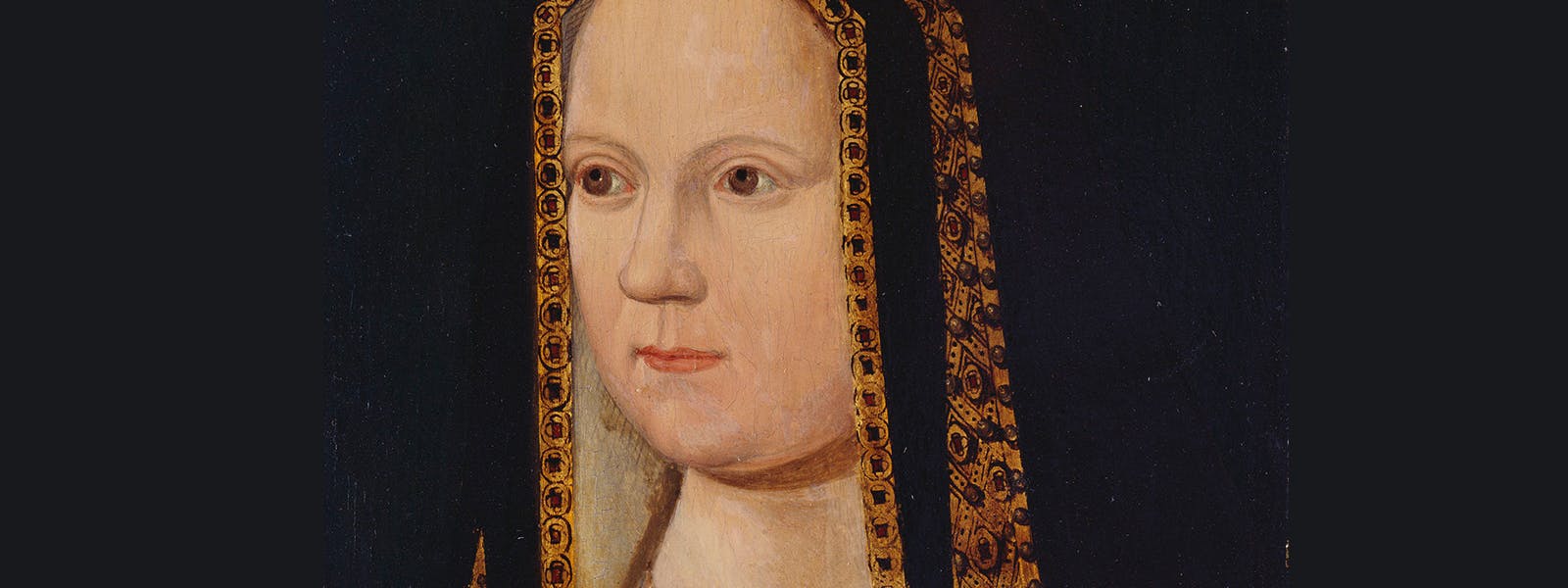
The original Tudor Queen, and wife of Henry VII
Elizabeth of York was the wife and queen of Henry VII, England's first Tudor King, and mother to Henry VIII. As the eldest child of the popular Yorkist King, Edward IV and his queen, Elizabeth Woodville, her claim to the throne was much stronger than her husband's. Elizabeth brought much-needed legitimacy to the new Tudor dynasty; many believed she should rule jointly with Henry.
Elizabeth was also the sister of Edward V and Richard, Duke of York, better known as the Princes in the Tower, who disappeared from the Tower of London in 1483 during the Wars of the Roses. Elizabeth’s marriage to the Lancastrian Henry united the warring houses of York and Lancaster and signalled the end of one of the most turbulent periods in the monarchy's history.
Elizabeth of York died at the Tower of London in 1503, on her 37th birthday. The evidence she left behind provides only a few tantalising clues to her personality and influence. Even her portrait only survives in later copies, but her legacy endures up to the present-day monarchy.
Header image: Elizabeth of York c.1470-98. © Royal Collection Enterprises Limited 2024 | Royal Collection Trust

Image: This painting is called 'The Family of Henry VII with St George and the Dragon' and dated 1503-9. St George attacks a dragon before Princess Cleodolinde; Henry VII and Elizabeth of York kneel with their children in the foreground. © Royal Collection Enterprises Limited 2024 | Royal Collection Trust
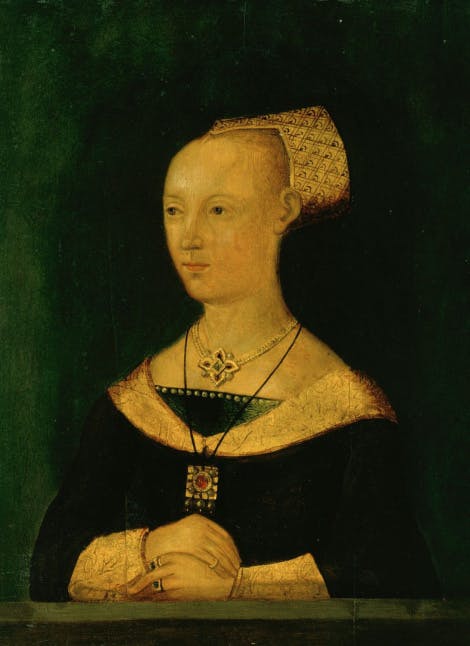
Image: Elizabeth Woodville, c.1513-1530. © Royal Collection Enterprises Limited 2024 | Royal Collection Trust
A Love Match: Elizabeth's Parents
Royal marriages were generally made for political and dynastic reasons, but Elizabeth’s father Edward IV married her mother Elizabeth Woodville (married name, Elizabeth Grey) for love.
The story goes that the King, who 'thought upon nothing but women', met Elizabeth Woodville as she waited by the roadside to petition him for the return of her late husband’s lands. He was instantly captivated, and married her in secret in May 1464, against the wishes of his government.
Elizabeth of York's Childhood
Elizabeth of York was born at the Palace of Westminster on 11 February 1466. As her parents' eldest child, she was heir to the throne for more than four years until her brother Edward (the future Edward V) was born. And her parents did not stop there, eventually having 10 children.
Elizabeth and her siblings grew up in what one contemporary described as 'the most splendid court that could be found in Christendom'. They travelled between about a dozen luxurious palaces in and around London, their days punctuated by prayers and services in the chapels. Elizabeth and her siblings rose at six o’clock each morning to attend Matins in their bedchamber before going to Mass. But this idyllic childhood was not to last, as Elizabeth’s life took a dramatic turn in 1483.

Image: Elizabeth's brothers, Edward V and Richard Duke of York, pictured in their chamber at the Tower of London. The boys were last seen in the Tower's grounds before they disappeared, and are now known as the Princes in the Tower. © Historic Royal Palaces
Richard III Seizes Power
On 9 April 1483, Edward IV died unexpectedly. On his deathbed, he named his brother Richard as Lord Protector because his eldest son and heir, Edward, was only 12 years old. Richard now had control of the King – and the country.
Events rapidly spiralled out of control. Richard placed the young King Edward V and the Duke of York in the Tower of London, and had Elizabeth and her siblings declared illegitimate on the basis that their parents had married in secret. Elizabeth fled to sanctuary at Westminster with her mother and remaining siblings.
Worse still, her brothers disappeared in the Tower. They were never seen again. Elizabeth’s uncle crowned himself King Richard III on 6 July.
Enter Henry Tudor, The Would-Be King
Henry Tudor Pledges to Marry Elizabeth of York
While Richard III struggled to assert his authority in England, his Lancastrian rival, Henry Tudor, was waiting in the wings in France to contest his throne. In an extremely shrewd move, Henry swore an oath to marry Elizabeth if he became King of England.
At the time, the Tudor line was an obscure relation of the Lancastrian faction, so Henry’s own claims to the throne were dubious, to say the least. Elizabeth was the eldest child of a King; Henry was merely the great-great-grandson of John of Gaunt (Edward III’s fourth son) and his then mistress, Lady Katherine Swynford.
A marriage to the York princess would give Henry VII much-needed credibility. But he may have had competition from none other than her uncle, Richard III.
Was Elizabeth of York considered as a bride for Richard III?
Although he already had a queen – Anne Neville – there were scandalous rumours that Richard III intended to set her aside to marry his niece Elizabeth. But this is doubtful. More likely is that the rumour was started to ruin her reputation and thereby end Henry’s plans to take her as a wife.
Although this didn’t work, it was said that when Tudor heard the rumours, they 'pinched him by the very stomach'. Eventually, though, Richard publicly denied that he had ever considered it.

Image: Henry VII by an unknown artist, 1505. © National Portrait Gallery, London
The Tudor Dynasty is Born
Henry VII, the First Tudor King
On 7 August 1485, Henry Tudor landed with a small army off the Pembrokeshire coast in Wales. He gathered more supporters on the march to England and clashed with Richard III’s forces on 22 August at Bosworth Field.
Richard III was defeated and killed, and his rival established a new dynasty as Henry VII. The reign of the Tudors had begun.
Henry VII's Coronation
Henry placed Elizabeth at Coldharbour, the London residence of his mother, Lady Margaret Beaufort. It was probably there that Elizabeth met her future husband, although no record of that survives.
During the autumn of 1485, the King sent 10 yards of crimson velvet and six yards of russet damask, and 64 timbers of ermine to the princess. All of this was taken as a sign that he intended to honour his pledge to marry her, but no offer of marriage was forthcoming. Elizabeth’s fate still hung in the balance.
Henry was determined to prove that he was King in his own right. He declared that he would not be his wife's 'gentleman usher', and forged ahead with his solo coronation on 7 November 1485. The service was hastily amended to remove references to a queen.
But there was some encouraging news. Parliament met on 7 November and, as well as asserting the legitimacy of Henry's title, it also legitimised Edward IV’s children. Elizabeth was now a royal princess once more.
'To her is come all the whole monarchy'
Elizabeth of York's Claim to the Throne
On 10 December 1485 the House of Commons urged the King to act on his promise to marry 'that illustrious lady Elizabeth, daughter of King Edward IV' and so render possible 'the propagation of offspring from the stock of kings'.
This suggests that, for all Henry's efforts to establish himself on the throne before taking a bride, popular feeling still regarded marriage to Elizabeth as a crucial element in his claim to the throne. Even their son, Henry VIII, would later remark that his claim to the throne was principally through his mother, not his father.

Image: Elizabeth of York, c.1470-98. © Royal Collection Enterprises Limited 2024 | Royal Collection Trust
[Edward IV’s title has] fallen to our sovereign lady, Queen Elizabeth, his eldest daughter; to her is come all the whole monarchy. The crown and therefore sceptre imperial she must have without division.
Political poem, 1487
Could a Queen Rule Tudor England?
Traditionally, in the 15th century, it was thought that a woman could not rule England in her own right (a queen regnant). She could only transmit her claim to a male member of her family, or rule on behalf of a man (as a queen consort, or regent).
This prejudice was thanks in part to the disastrous reign of Empress Matilda, daughter of Henry I, in the 1100s. But women were also viewed as inferior to men physically, intellectually and morally. There was therefore no suggestion that Elizabeth should reign alone, but many expected her to enjoy joint sovereignty with Henry.

Image: Four unknown sitters engraved as 'The Marriage of King Henry VII and Elizabeth of York', by Charles Grignion, after Jan Gossaert (Mabuse), 1762. © National Portrait Gallery, London
A Queen Without A Crown
Elizabeth of York Marries Henry VII
Elizabeth and Henry’s marriage was celebrated on 18 January 1486. But Elizabeth would not yet be crowned – perhaps because Henry wanted to be sure that she would bear him children before officially making her his queen. If so, he did not have long to wait.
On 20 September 1486 – just eight months after marrying Henry, Elizabeth gave birth to a healthy boy. The new prince was christened Arthur in Winchester Cathedral, to remind everyone of Henry VII’s purported descent from the legendary King Arthur.
Did Elizabeth want to marry Henry VII?
We know little of Elizabeth's true feelings about marrying Henry Tudor. As the daughter of a Yorkist King who had been at war with Henry’s Lancastrian relatives, she may have had to put duty ahead of her personal desires. According to historian Polydore Vergil, who spent time at the Tudor court, Elizabeth was an 'unhappy creature' at being 'united with a man who is the enemy of my family'.
Elizabeth's Coronation
Having fulfilled her most important royal duty, Elizabeth was finally crowned at Westminster Abbey on 25 November 1487, 'a circlet of gold, richly garnished with precious stones upon her head'. As per tradition, she had spent a night before her coronation at the Tower and rode out on 24 November for her state entry into London.
Elizabeth of York as a Mother
Births of Margaret, Henry and Mary
Elizabeth might have borne Henry a son and heir in Arthur, but in this age of high infant mortality, it was vital to have at least one spare. For a new and shaky dynasty, securing the succession was crucial.
Happily, three more of Elizabeth and Henry's children survived into adulthood: Margaret, Henry and Mary. Tradition dictated that while the heir was groomed for kingship, the other children were cared for by their mother.
Elizabeth appointed Elizabeth Denton, one of her own gentlewomen, as head of the royal nursery in addition to keeping her in service in her own retinue – that 'Lady Mistress' Denton could maintain both roles suggests Elizabeth spent a great deal of her time with her children.
A 'Loving Son': Elizabeth of York and Prince Henry
If the Queen had a favourite child, it was her second-born son, Prince Henry – the future Henry VIII. Analysis of Henry’s childhood scrawl reveals a similarity to his mother’s handwriting, which suggests that she taught him his letters.
'Very magnificent and in splendid style': Elizabeth's Household
As Queen, Elizabeth appeared to live up to her motto of 'humble and reverent', performing her duties impeccably, without complaint or controversy. Known for her piety, she made generous bequests to the church. She did, though, also make the most of her privileged position.
Elizabeth wore gowns of the richest materials and favoured black, but also had dresses of crimson, purple and gold. Many were made of wool to keep out the chill of the royal palaces, and all were beautifully decorated with deep borders at the hem.
The atmosphere of Elizabeth's household was convivial, engaging and open, reflecting her personality. A Spanish ambassador reported: 'The Queen has thirty-two ladies, very magnificent and in splendid style.' She loved books and patronised the English printer William Caxton. Knowing his wife's love of reading, Henry gave her several beautifully illuminated books, including the Miroir des Dames, a moral instruction for queens and other high-born ladies. She also enjoyed music and dancing, and kept greyhounds.
Elizabeth excelled at embroidery and spent many of her private hours working on tokens of her wifely devotion, including a Garter robe woven with Venetian gold, which she presented to her husband.
Did you know?
Elizabeth and Henry shared a love of gambling and sometimes wagered large amounts, such as at Christmas 1502 when the Queen lost 100 shillings.

Image: Lady Margaret Beaufort, Countess of Richmond and Derby by an unknown artist, second half of 17th century. © National Portrait Gallery, London
The Royal Family
The Indomitable Lady Margaret Beaufort
There are hints that Elizabeth’s relationship with Henry’s mother, Lady Margaret Beaufort, was not always easy. The Spanish envoy observed that Margaret kept Elizabeth 'in subjection'. Another visitor to court claimed that she was the Queen’s gatekeeper, and begrudged the fact that he would have spoken more to Elizabeth 'had it not been for that strong whore, the king’s mother'.
She and Margaret spent a great deal of time together. Margaret attended the births of her daughter-in-law’s children and Henry often referred to his wife and mother in the same breath.
Elizabeth's Yorkist Ties
Elizabeth retained her links with the surviving members of her Yorkist royal family, even though some of them conspired against her husband the King. She helped to arrange the marriages of her sisters Cecily and Anne to Lancastrian men who were loyal to Henry, and was also in regular contact with her cousin, Margaret Pole.
Elizabeth saw little of her mother after the latter retired to Bermondsey Abbey in 1487. She died there on 8 June 1492. When the Queen gave birth to a daughter on 2 July, she named her Elizabeth in honour of her late mother.
In 1502, Elizabeth was confronted with a painful reminder of her lost brothers after the arrest of Sir James Tyrell, a close advisor of Richard III. Thomas More claimed that during his trial, Tyrell confessed to the murder of the Princes in the Tower. Although there is no evidence for this, it is intriguing that Elizabeth chose to visit Tyrell during his imprisonment in the Tower before his execution.
'Great Loss Smote Her'
The Marriage and Death of Prince Arthur
One of the most triumphant events of Elizabeth’s life – and a high point of her husband’s reign – was the marriage of their eldest son and heir, Arthur, to Katherine of Aragon in November 1501. The daughter of Ferdinand and Isabella of Spain, Katherine was, like Elizabeth, of impeccable lineage and the marriage cemented England’s alliance with one of the greatest powers in Europe.
But triumph turned to tragedy when, a little over five months later, Arthur died, aged just 15.
'Sorrowful heavy tidings'
'When his grace [Henry VII] understood that sorrowful heavy tidings, he sent for the queen, saying that he and the queen would take the painful sorrows together,' a contemporary recounted.
Elizabeth rushed to comfort her husband, reminding him with 'constant comfortable words' that they still had 'a fair prince, two fair princesses [and] are both young enough' to have more.
As soon as Elizabeth was in the privacy of her chamber, though, her composure crumbled. The full impact of the ‘great loss smote her so sorrowful to the heart’ and she wept uncontrollably. Now it was the king’s turn to comfort her, which he did with ‘true gentle and faithful love’.
Did you know?
Elizabeth of York spent the night before her son's wedding with her soon-to-be daughter-in-law Katherine of Aragon at Baynard's Castle, close to the Tower of London.
Elizabeth's Death at the Tower of London
Just as she had promised, Elizabeth conceived another child soon after her eldest son’s death. Tragically, this would be her last duty as Queen. On 11 February 1503, after giving birth 'suddenly' to a baby girl, Elizabeth of York died in the medieval Queen’s Lodgings at the Tower of London.
Elizabeth's husband and children were inconsolable. Henry VII locked himself away and, when he finally reemerged, his hair had turned white with grief. He spent a staggering £2,800 (more than £1.8 million today) on Elizabeth's funeral.
Elizabeth was interred in the Lady Chapel of Westminster Abbey, which her husband had commissioned just a month before her death. He was buried next to her upon his own death six years later. The Italian Renaissance sculptor, Pietro Torrigiano, crafted beautiful bronze effigies of husband and wife for their tomb.
Prince Henry would still talk of his mother’s death decades later as King, once chastising a man for unwittingly reminding him of the 'wound' of his grief.

The Death of Elizabeth of York at the Tower of London
Hear from our experts on our blog
Tracy Borman delves into the story behind the death of the original Tudor Queen, within the walls of this royal fortress.

Image: A copy of Henry VIII's life-size mural from Whitehall Palace, depicting his parents Henry VII and Elizabeth of York, alongside himself and his third Queen, Jane Seymour. Henry VIII remarked that his claim to the throne was principally through his mother, not his father. © Royal Collection Enterprises Limited 2024 | Royal Collection Trust
How Should We Remember Elizabeth of York?
Elizabeth of York's legacy was profound and enduring. It was thanks to her royal lineage that the fledgling Tudor dynasty was able to flourish and endure for well over a century.
Elizabeth's seven children included several famous (and notorious) kings and queens. Elizabeth's youngest daughter Mary Tudor briefly became Queen of France, while her eldest, Margaret Tudor, was crowned Queen of Scotland and gave birth to a line of monarchs who still occupy the throne of Great Britain today.
Most famously, Elizabeth's beloved second eldest son became Henry VIII on the death of his father in 1509; over the next four decades, he changed the course of English history with the help of his six queens.
All three of Henry's children would rule England. Elizabeth's namesake, Elizabeth I confounded all expectations to reign for longer and more successfully than any of her Tudor predecessors. It was a legacy of which her grandmother would have been proud.
Discover more about the Tudors

Henry VIII's lost gardens at Hampton Court
Discover a vast, glittering complex of lost Tudor buildings
Listen to the podcast
Women of the Wars of the Roses
Women played vital roles in the power struggles of the Wars of the Roses, but history hasn’t always been portrayed this way.
In this episode of the Historic Royal Palaces Podcast, we’re putting women back in the narrative, from Margaret of Anjou right the way through to Elizabeth of York and the start of the Tudor Dynasty. Curator Charles Farris and Dr Joanna Laynesmith talk us through the key women of the Wars of the Roses.
More episodesPodcast transcript
Browse more history and stories
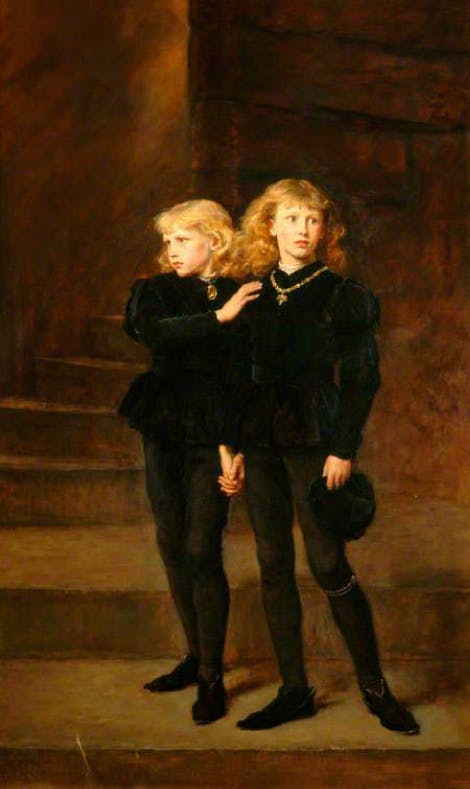
The Princes in the Tower
Murdered or survived – what happened to Edward and his younger brother Richard?
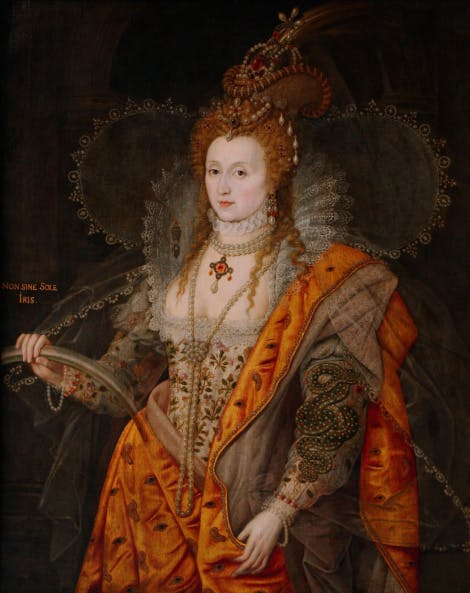
Elizabeth I, the Last Tudor
From Tower prisoner to English Queen
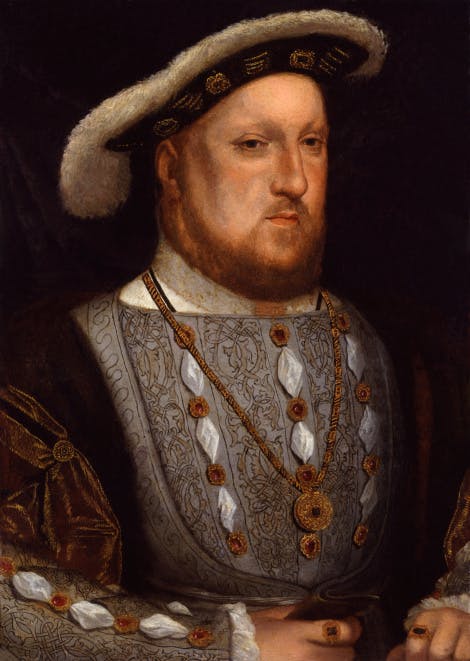
Henry VIII, Terrible Tudor?
Who was the real Henry VIII?
Explore what's on

- Things to see
Imprisonment at the Tower exhibition
Learn why people ended up as prisoners in the Tower of London, in the very rooms where some of them were held.
- Open
- Tower of London
- Included in palace admission (Members go free)

- Things to see
Tower Hill Execution Memorial
Complete your visit to the Tower of London at the Tower Hill Memorial, in what is now Trinity Gardens. Here, an estimated 125 people were executed– including many prisoners of the Tower.
- Daily
- Tower of London
- Free

- Families
- Things to see
Armoury in Action
Shoot arrows, assemble firearms and brandish a sword in this exciting, hands-on experience in the White Tower.
-
Closed until further notice
- Tower of London
- Included in palace admission (Members go free)
Shop online

Shop Six Wives of Henry VIII
'Divorced, Beheaded, Died: Divorced, Beheaded, Survived' - this best selling range is as colourful as it is informative.
From £15

Shop Kings & Queens of England
Discover our informative and best selling range, inspired by the incredible history of the Kings and Queens of England.
From £4.99

Katherine Parr Decoration
Handmade fabric hanging decoration of Katherine Parr, King Henry VIII's six wife.
£13
